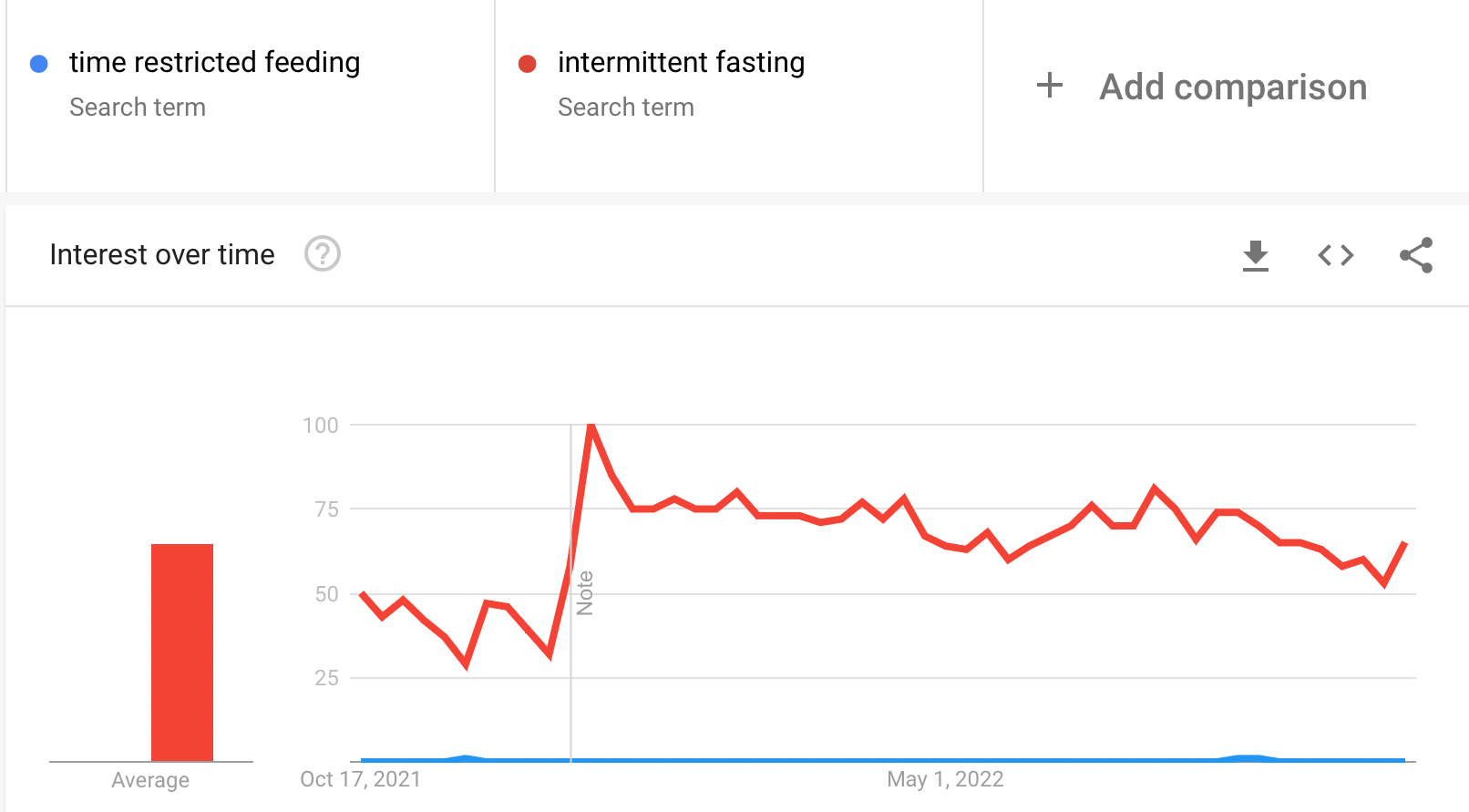What is Time Restricted Feeding and How is it Different From Intermittent Fasting?

If you've been looking into fasting routines such as intermittent fasting, you may come across the phrase Time Restricted Feeding. It might also be confusing because the term is sometimes used in place of intermittent fasting, but not always.
In this post, we'll sort out the exact definitions of Intermittent Fasting and Time Restricted Feeding, and learn about why there is sometimes confusion around the two terms.
Casual Terms of Fasting Routines
Intermittent Fasting, in common, casual use, can be used to refer to a wide range of fasting schedules including 16:8, one-meal-a-day, 5:2, multiple-day fasts, etc. This phrase is the wording of choice when talking about these diets for most people and resources, including this website and others like it.
Time Restricted Feeding on the other hand, is a different term for some fasting routines, but is very uncommon in casual conversation. If you're talking about these diets casually, both online and in the real world, most people simply say intermittent fasting. See this chart on search volumes for the two terms:

So in common usage, Intermittent Fasting and Time Restricted Feeding are often used interchangable with Intermittent Fasting being the primary term. The problem is that technically speaking, they refer to different kinds of fasting schedules.
Technical Terms of Fasting Routines
In technical terms, Intermittent Fasting and Time Restricted Feeding are two different things. If you are reading to scientific literature or otherwise having a highly technical conversation on the topic, the two terms are distinct. Here's what the terms mean:
Intermittent Fasting refers to fasting schedules in which there is significant fasting one or more full days of the week, e.g., 5/2.
Time Restricted Feeding refers to fasting schedules in which there is significant fasting on a daily schedule, e.g., 16/8 or OMAD (one meal a day).
Here's a technical description of the two from the paper Time-restricted feeding and risk of metabolic disease: a review of human and animal studies
IF involves a complete or partial restriction in energy intake (i.e., 50–100% restriction) on 1–3 days per week. ... Although IF is an effective means of lowering the risk of metabolic disease, approximately 20% of individuals cannot adhere to this form of dietary restriction.6 As such, an alternative form of IF, termed “time-restricted feeding” (TRF), may be used to increase compliance. TRF allows individuals to consume ad libitum (AL) energy intake within a set window of time (3–4 h, 7–9 h, or 10–12 h), which induces a fasting window of 12–21 hours per day.
So technically speaking, most people are saying Intermittent Fasting when they're in fact describing a Time Restricted Feeding routine. We do the same thing on this site, as does almost every other site and article on the topic. It's completely okay to have a term that differs in common and technical usage, as long as you're careful about the context. After all, as shown in the Google Trends graph above, if you go searching for information on the "correct" term, you'll probably come up short.
Summary
To sum it up, if you are talking casually about any of these fasting routines, it's fine to say Intermittent Fasting. But if you're having a technical conversaion, or if you're reading scientific literature on the topic, be careful to use the correct term: Intermittent Fasting for full or multi day fasting, and Time Restricted Feeding for partial day fasting schedules.